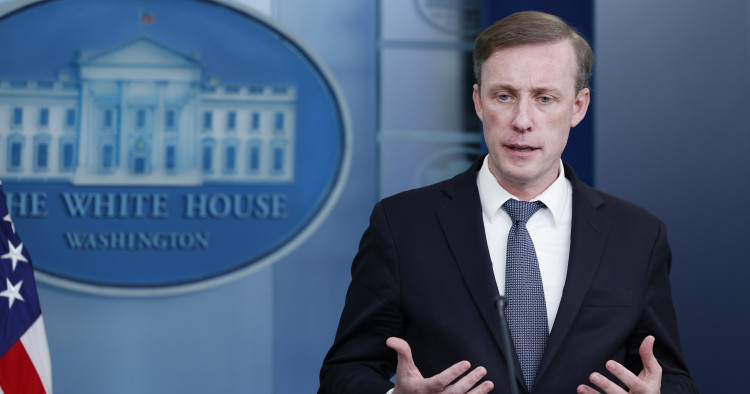Contents:
- Six parallel negotiation tracks complicate ability to reach an Israel-Hamas cease-fire deal
- Navigating the complex path to an Israel-Hamas hostage exchange deal
- Israel open to pause in fighting and hostage release — but not giving up on Rafah operation
- US crisis diplomacy seeks to set a framework for longer-term deals
- Qatar to host Israel-Hamas talks as it works to mediate cease-fire and hostage release deal
Six parallel negotiation tracks complicate ability to reach an Israel-Hamas cease-fire deal
Randa Slim
Senior Fellow and Director of Conflict Resolution and Track II Dialogues Program

-
In addition to the principal, though indirect, negotiations between Israel and Hamas, there are five other significant negotiation tracks that feed into the primary talks and are affected by developments on the ground inside Gaza, Israel, regionally, and in the US.
-
All these negotiating tracks, which operate simultaneously amidst a volatile conflict situation both in Gaza and the region, make the job of the tripartite mediating team all the more difficult.
On Sunday, Feb. 25, United States National Security Advisor Jake Sullivan confirmed reports indicating that quadripartite negotiations between Qatar, Egypt, Israel, and the US on a temporary cease-fire in the Gaza Strip and the simultaneous release of Israeli hostages and Palestinian prisoners are drawing to a close. This deal, if finalized, will also include a significant surge in humanitarian assistance to Gaza. Though, under the laws of war, humanitarian assistance should be the civilians’ right and not an issue to be negotiated over.
Qatar, Egypt, and the US hope to get Israel and Hamas to agree to a deal before the start of Ramadan, on March 10. However, like in any multi-sided, multi-issue negotiation, agreement is often difficult to reach primarily because all sides, including the warring parties directly involved in the negotiations, the mediator(s), as well the “neighborhood” parties affected by the conflict, have interests and demands that must be reckoned with; this creates room for many spoilers to derail a deal.
In this case, six different negotiation tracks are proceeding simultaneously. There is the principal one: indirect negotiations between Israel and Hamas that are being mediated by a tripartite team involving the US, Egypt, and Qatar. The five other significant negotiation tracks that feed into this principal track — and are affected by developments on the ground inside Gaza, Israel, regionally, and in the US — include:
-
The intra-Israeli track, led by a prime minister whose main agenda is political survival and who views every deal primarily through that lens;
-
The intra-Hamas negotiations between the Doha-based external and the Gaza-based internal wings of Hamas, both of which are interested in their political and physical survival and view any deal through that lens as well;
-
The Qatar/Egypt-Hamas track, with Qatar maintaining outreach to Hamas’ Doha-based leadership, and Egypt (primarily Egyptian military intelligence) to the Gaza-based leadership. Both Qatar and Egypt want a cease-fire as soon as possible, with Egypt more concerned about the immediate implications to its own security of a massive Palestinian displacement in the event of an Israeli onslaught on Rafah — as Israeli officials have been threatening will be their next move in their more-than-four-month-old war in Gaza;
-
The Israeli-US negotiation track, led on the American side by President Joe Biden, who is concerned about a wider war if the current phase of fighting does not end soon as well as the war’s impact on his political future. On the one hand, Biden faces pressure from the pro-Israeli lobby, which is demanding he continue with his unconditional support for Israel. On the other hand, a coalition of groups that voted for him in 2020, including Arab- and Muslim-Americans in the swing state of Michigan, are threatening to boycott the vote next November in opposition to his backing of Israel, thereby threatening his re-election prospects;
-
Finally, there is the Arab-US negotiation track, focused on shaping the conditions and incentives for a dialogue process between Israelis and Palestinians toward the implementation of the much-vaunted two-state solution.
All these negotiating tracks, which operate simultaneously amidst a volatile conflict situation both in Gaza and the region, make the job of the tripartite mediating team all the more difficult.
Follow: @rmslim
Navigating the complex path to an Israel-Hamas hostage exchange deal
Carol Daniel-Kasbari
Non-Resident Scholar

-
Talks aimed at securing a hostage deal have seen a resurgence, with new proposals on the table and a delegation sent to Qatar, representing cautious optimism for a breakthrough.
-
Both Israel and the Palestinian territories are grappling with internal pressures, from public protests in Israel against the government’s approach to the conflict, to Hamas's efforts to assert its leadership and the Palestinian Authority’s challenged position.
Following the conclusion of the latest talks in Paris, which wrapped up on Feb. 24, the quest for an Israel-Hamas hostage deal remains unresolved, leaving officials to estimate a 50% chance of success. However, the thaw in negotiations, after nearly a month-long standstill, injects a dose of optimism into the process.
Initially, these discussions took shape around a preliminary framework agreed upon in the French capital. In response to the early-February proposal from Paris, Hamas laid out its own terms, presenting a tougher stance for Israel that became the topic of discussion for negotiators in Cairo, Egypt, on Feb. 13. Prime Minister Benjamin Netanyahu’s initial reluctance to dispatch an Israeli delegation to Cairo was notable. Yet under pressure from Washington — which seeks a pause in hostilities of at least six weeks before Ramadan’s onset, on March 10 — he conceded, though without empowering the team for full negotiations.
This restart of dialogue provides an opportunity for both sides to assert their correctness. Netanyahu might argue that his firm resistance led to a more pliable position from Hamas. Contrarily, some contend that Hamas leader Yahya Sinwar has recognized the benefits of a deal, a realization mirrored by Israeli policymakers. Despite this tactical shift, the negotiations’ future remains uncertain.
A significant development came when officials from the United States, Qatar, and Egypt introduced a more detailed proposal, in Paris, for a hostage deal, ramping up pressure for a resolution. The American push for a deal is driven by the broader ambition of achieving a regional agreement, while Egypt expresses concern over potential unrest along its border with Gaza during Ramadan.
Hamas’ leadership, particularly Sinwar, faces stark warnings from Gulf states: soften your stance or lose crucial financial support and safe haven — a dire existential threat. The looming season of Ramadan and mounting concerns about both the humanitarian situation faced by Gaza’s population and the Hamas leadership’s survival prospects add further urgency to reaching an agreement.
While Hamas’ position has heavily shaped the focus and outlines of the cease-fire negotiations, the Palestinian Authority (PA) has remained on the periphery since the onset of the Gaza conflict. A solitary appeal two weeks ago from PA President Mahmoud Abbas for a swift hostage-prisoner exchange underscores the escalating humanitarian concerns. The PA’s relative silence has stirred discontent among Palestinians, with a significant majority expressing a desire for Abbas’ resignation and questioning the PA’s future viability, according to recent polls. Against this backdrop, Hamas’ enhanced standing among Palestinians is evident, as it seeks to consolidate this support through governance dialogues with 12 Palestinian political factions in Moscow on Feb 29.
In Israel, the desire to secure an agreement significantly surpasses any potential drawbacks. The looming threat of a third intifada erupting in the West Bank during Ramadan has notably increased the urgency to finalize a deal. Moreover, the country has seen a growing wave of anti-government protests, particularly pronounced on Saturday evenings. These demonstrations, a common occurrence before the Hamas attacks on Oct. 7, reflect deep-seated dissatisfaction with Prime Minister Netanyahu and his administration, a sentiment that predates the conflict by over a year. The latest protests have seen an escalation in police response, marking a shift since last October. The motivation behind these demonstrations has been fueled by the ongoing conflict in Gaza and concerns that the Israeli government prioritizes military victory over the liberation of hostages.
On Sunday, Israel sent a delegation with “a limited mandate” to Qatar for additional talks, focusing on the technical aspects of a potential deal that could result in a weeks-long truce and pave the way for the exchange of hostages for hundreds of Palestinian prisoners. The negotiations in Doha, as highlighted by Egyptian state media, represent a concerted effort by a coalition of experts and representatives from Egypt, Qatar, the United States, Israel, and Hamas. Amidst this intricate dance of diplomacy, the overriding ambition to clinch a deal eclipses any conceivable disadvantages for all involved parties. However, in a strategic move, Prime Minister Netanyahu underscored, on the verge of a potential breakthrough, that the Israel Defense Forces (IDF) would proceed with an operation in Rafah irrespective of any cease-fire agreement with Hamas. This move, ostensibly aimed at satisfying domestic expectations, introduces a stark complication for international mediators engaged in navigating this daunting challenge.
Israel open to pause in fighting and hostage release — but not giving up on Rafah operation
Nimrod Goren
Senior Fellow for Israeli Affairs

-
The apparent progress toward a pause in fighting and hostage release during Ramadan serves Israel’s interests: freeing more hostages, allowing its military to rest and regroup, distancing a spillover of the conflict to the West Bank and Jerusalem, as well as somewhat easing the humanitarian impact of an Israeli operation in Rafah at a later date.
-
Such a deal will not alter Israel’s intention to eventually launch a military operation in Rafah; though a brief pause in the fighting could help Israel create better conditions for such an incursion of southern Gaza that meet demands presented by the United States and Egypt.
Diplomatic efforts to secure an indirect Israel-Hamas agreement on a pause in fighting in the Gaza Strip and the release of some Israeli hostages are showing signs of progress. Mediation by the United States, Egypt, and Qatar seems to be bearing fruit due to a unique — and temporary — convergence of interests between the warring parties, as the holy month of Ramadan draws near. Yet the agreement is still not a done deal. While basic principles may have already been agreed upon, many details still need to be ironed out. Negotiations over them will be strongly colored by domestic politics, as Israeli Prime Minister Benjamin Netanyahu continues to fight for his political survival. In the coming days and weeks, Israel as well as Hamas are likely to toughen their positions and put up fresh obstacles until a deal is reached — and perhaps even during its implementation.
But reaching a deal ahead of the start of Ramadan seems to serve Israel’s interests for at least four reasons. First, the deal is expected to bring home some 40 Israeli hostages — among them women and elderly individuals. This is not the comprehensive release Israel is seeking, but it would nevertheless save lives. Testimony shared by hostages freed in the previous pause are heartbreaking for Israelis to hear and create a sense of urgency for further releases.
Second, the deal currently being negotiated will not force Israel to give up on its major strategic objectives. It will include an approximately six-week pause as well as necessitate some Israeli redeployments within the Gaza Strip; but it will not require a commitment to a longer-term cease-fire (as Hamas originally demanded). The time out will give the Israeli military (as well Hamas) time to regroup and prepare for the next phase in the war. It will also enable Israeli reservists to spend more time at home, after being temporarily released some weeks ago from long service.
Third, the timing of the deal may assist Israel in its effort to prevent a spillover of escalation to Jerusalem and the West Bank during Ramadan. The fear of spillover has been real since Oct. 7, with further implications for the delicate and strategically important relations between Israel and Jordan. A pause in fighting in Gaza, and therefore possibly also along the Israel-Lebanon border, would reduce the likelihood of additional flare-ups during a sensitive period. Israel may eventually seek to extend the pause a bit beyond Ramadan, so that it includes Passover, in late April.
Fourth, should the humanitarian aspect of the deal also allow for the return of a significant number of Gazans from southern Gaza to its northern districts, this will reduce the amount of internally displaced Palestinians around Rafah, thus potentially easing a future Israeli operation there. Moreover, this could showcase some Israeli compliance with international requests for humanitarian steps.
Indeed, it is important to underscore that even if a deal is reached, an Israeli operation in Rafah will still be looming. The pause will give Israel time to address red lines posed by the US and Egypt. But the Israeli side sees an operation in Rafah — perhaps the last pulse of high-intensity fighting — as necessary to achieve key aspects of its war objectives: dismantling Hamas units, neutralizing Hamas’ leaders, bringing the rest of the hostages home, and creating new security arrangements in the Gaza Strip.
The Israeli leadership is not willing to give up on these aims. So while reaching a deal will be an achievement for international diplomacy, most likely it will represent a short-term win. Significant diplomatic progress on shifting from fighting to peacemaking will only be possible after a more moderate coalition takes office in Jerusalem.
Follow: @GorenNimrod
US crisis diplomacy seeks to set a framework for longer-term deals
Brian Katulis
Senior Fellow for U.S. Foreign Policy and Senior Advisor to the President

-
US officials once again sounded a hopeful note that a deal for a multi-week pause in the Israel-Hamas conflict combined with releases of hostages in Gaza in exchange for Palestinian prisoners could happen soon, before the start of Ramadan in early March.
-
American diplomatic efforts to de-escalate the war in Gaza are part of a broader strategy to prevent wider regional turmoil; but given the positions of the two main combatants, Hamas and Israel, diplomatic success in the long term has slim odds.
US National Security Advisor Jake Sullivan offered some hope over the weekend that Israel and Hamas might soon agree to a temporary cease-fire combined with releases of hostages in Gaza in exchange for Palestinian prisoners.
Central Intelligence Agency (CIA) Director Bill Burns, Israeli Mossad head David Barnea, and negotiators from Egypt and Qatar who have been serving as intermediaries to Hamas, met in Paris late last week, and Sullivan said those discussions produced an understanding about the broad contours of a deal. Another round of talks is reportedly taking place this week in Doha to discuss technical details of the proposed parameters and to gauge if the leadership of Hamas (in Gaza as well as Doha) will agree to this latest effort.
According to press reports, Israel has agreed to a deal that would involve a six-week truce and the exchange of 40 hostages held in the Gaza Strip in exchange for an unspecified number of Palestinian prisoners held by Israel. The deal under discussion also reportedly includes an initial and limited return of Palestinians to the northern part of the Gaza Strip and a large increase in humanitarian aid reaching Palestinians in Gaza.
In nearly three months since Hamas broke a temporary cease-fire by firing rockets in early December, the Biden administration has dedicated considerable diplomatic effort to working with Israel, Qatar, and Egypt to broker another deal. In addition to CIA Director Burns, President Joe Biden has personally engaged in talks on a deal and repeatedly dispatched Secretary of State Antony Blinken and top White House official for the Middle East Brett McGurk.
The main reason for this high-level engagement is obvious: Without some deal that leads to another pause in fighting and brings hostages home, the conflict is likely to continue without an end in sight. The fact that as many as six Americans may remain in captivity in Gaza further illustrates why these negotiations have been a top priority. Yet the cease-fire that many voices advocate for will not magically materialize simply because the United States or other outside powers dictate it or if a United Nations resolution calling for a cease-fire passes — it will only emerge through painstaking diplomacy, like what’s been under way for several months now.
These negotiations are complicated by the fact that the parties to the conflict continue to use force, violence, military action, propaganda, and media statements to shape the calculations of those involved in the talks. At times, voices from Hamas or Israel have sought to expand the parameters of the negotiations to include other issues less directly linked to an immediate cease-fire, hostage release, and prisoner exchange, like the longer-term presence of Israeli forces in Gaza and ideas to eliminate the security threat Hamas poses to Israel.
The Biden administration is working hard to secure a deal before the start of Ramadan, in about two weeks, in part because it fears that ongoing combat operations in the Gaza Strip could inflame tensions in Jerusalem, the West Bank, and the wider region. The Biden team has also made it known it hopes that a temporary pause in the fighting will pave the way for arrangements that would make it difficult for Israel and Hamas to resume the conflict. More broadly, it also maintains high aspirations in the longer term for a two-state solution and a normalization deal between Israel and Saudi Arabia.
The fact that it has taken so long to get the parties this close to another temporary cease-fire deal should temper expectations about how realistic these longer-term aspirations are. The grim reality of today’s Middle East is that many actors across the region, like Iran and several leaders and factions within Israel and Palestine today, are poised to play a spoiler role and upset the delicate diplomacy aimed at ending this war and paving a new pathway to peace talks.
Follow: @Katulis
Qatar to host Israel-Hamas talks as it works to mediate cease-fire and hostage release deal
Oliver B. John
Non-Resident Scholar

-
Given Hamas’ demand for a permanent cease-fire before releasing the remaining hostages and Prime Minister Benjamin Netanyahu’s assertion that Israeli troops will enter Rafah deal or no deal, this week’s talks in Doha are likely to be challenging.
-
Qatar has made a strategic choice to promote itself as an effective mediator, drawing on its longstanding contacts with Israel and Hamas and using soft power to make itself useful both regionally and with major powers.
Israel is sending a delegation to Doha this week to continue talks on a temporary cease-fire and hostage release. These talks follow last week’s Paris negotiations between the Israelis and mediators from the United States, Egypt, and Qatar over a cease-fire/hostage release deal. Although Hamas has not publicly commented, both Israeli and US officials sounded cautiously optimistic. US National Security Advisor Jake Sullivan stated that the countries have the “basic contours” of a deal, though he acknowledged that Qatari and Egyptian mediators needed to talk with Hamas. Given Hamas’ demand for a permanent cease-fire before releasing the remaining hostages and Israeli Prime Minister Benjamin Netanyahu’s statement that Israeli troops will enter Rafah deal or no deal, the talks are likely to be challenging.
Although the Qataris have not discussed the most recent round of negotiations, in January, Qatari Prime Minister and Minister of Foreign Affairs Sheikh Mohammed Al Thani described Doha’s role as using its “good offices” to try to pressure both parties to “bridge the gaps between them.” A Qatari negotiator further explained that they went beyond just passing messages and worked with each party to make their proposals acceptable to the other side.
Like Egypt, Qatar has drawn on its longstanding contacts with both Israel and Hamas to serve as a mediator in the current conflict. It has hosted Hamas leaders for over a decade and coordinated closely with the Israeli government to provide aid, fuel, and salaries for civil servants in the Gaza Strip. Despite its unwillingness to open formal diplomatic relations with Israel, both Israel and Hamas have been willing to trust it as a mediator, and it has been relatively successful in that role.
Qatar has made a strategic choice to promote itself as an effective mediator. This display of soft power helps build its international brand and makes Qatar useful both regionally and with major powers such as the United States. Only two years after the Saudis, Emiratis, Egyptians, and Bahrainis ended their blockade of Qatar, Gulf Cooperation Council and Egyptian leaders praised Qatar’s efforts to mediate an end to the Gaza crisis. For a small country surrounded by powerful neighbors, soft power is an important asset.
It is also a risky asset, however. After Hamas’ Oct. 7 attack on Israel, Qatar’s contacts with the organization have opened it up to criticism for “supporting terror.” On Feb. 19, Qatar pushed back on Netanyahu’s allegations that it is not doing enough to obtain the hostages’ release. The spokesman for Qatar’s Ministry of Foreign Affairs accused Netanyahu of attempting “to prolong the war” to avoid his “personal political challenges,” and stressed that Qatar would continue its efforts to mediate a cease-fire and hostage release.
Photo by Anna Moneymaker/Getty Images
The Middle East Institute (MEI) is an independent, non-partisan, non-for-profit, educational organization. It does not engage in advocacy and its scholars’ opinions are their own. MEI welcomes financial donations, but retains sole editorial control over its work and its publications reflect only the authors’ views. For a listing of MEI donors, please click here.













